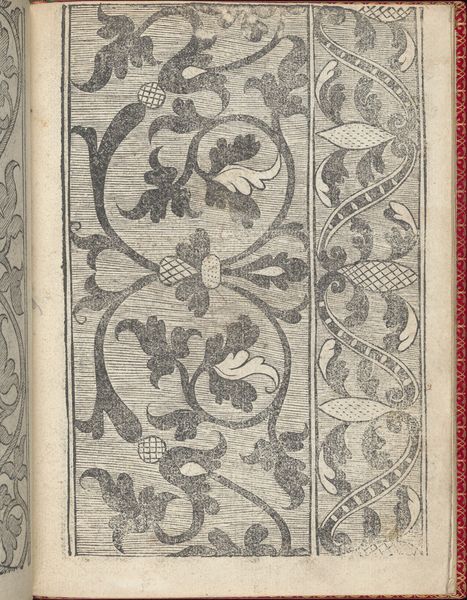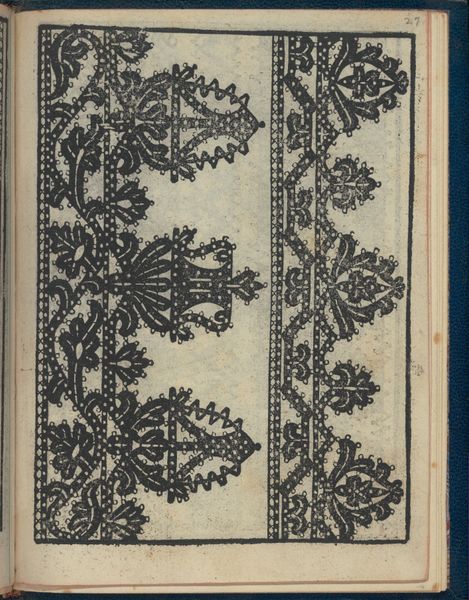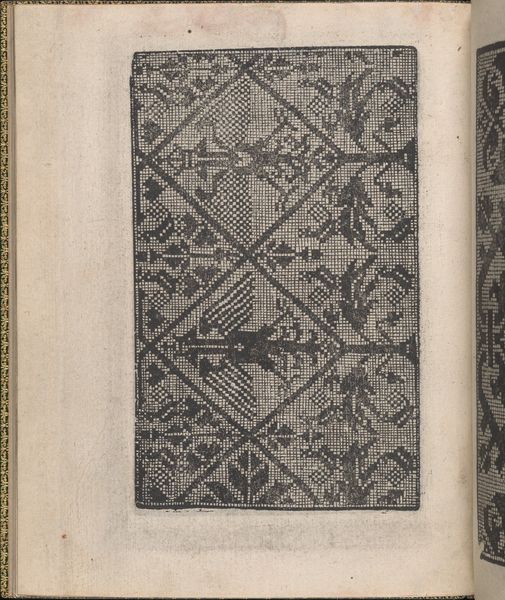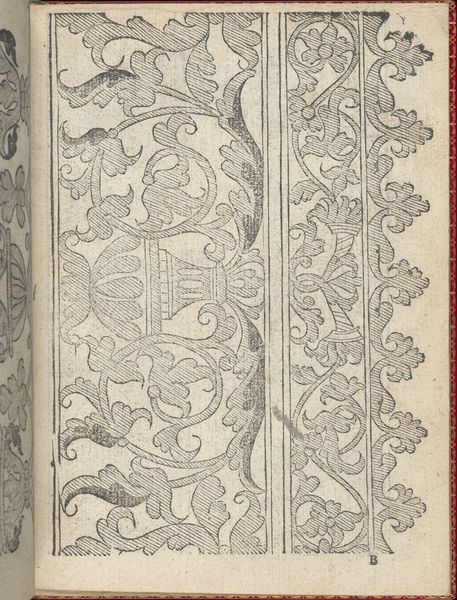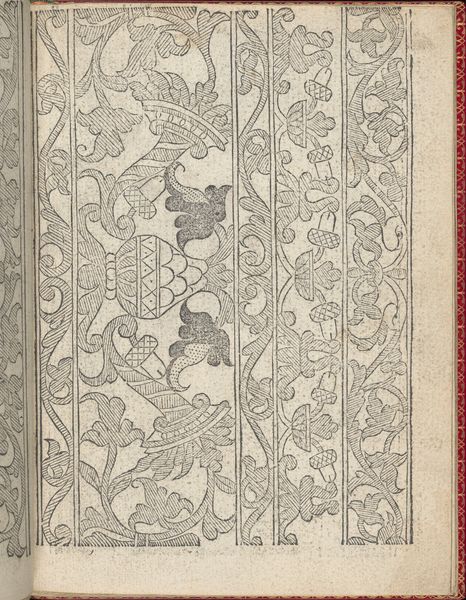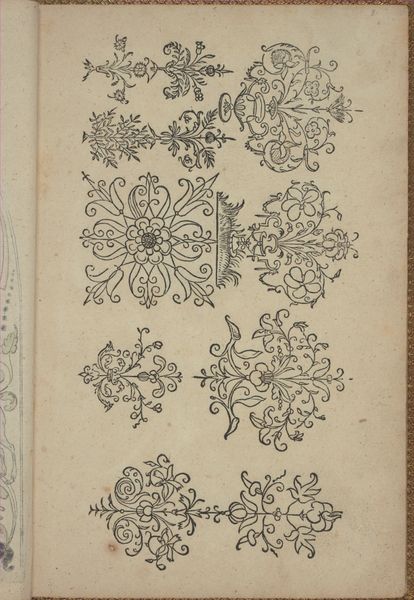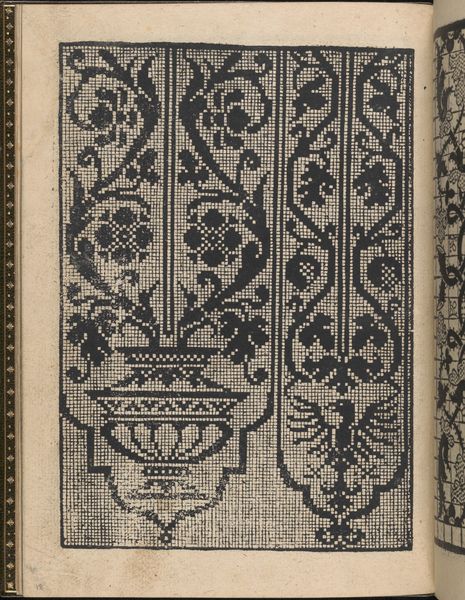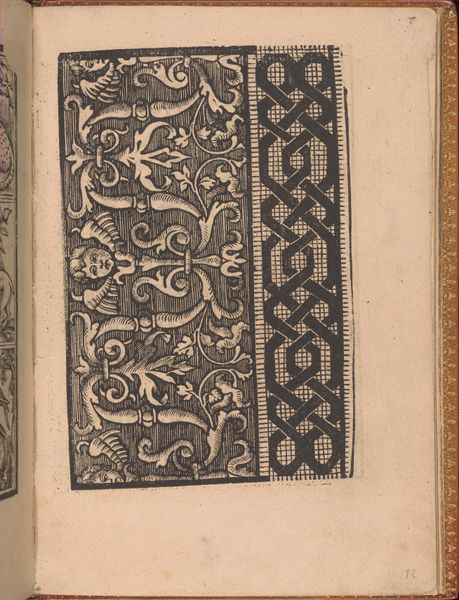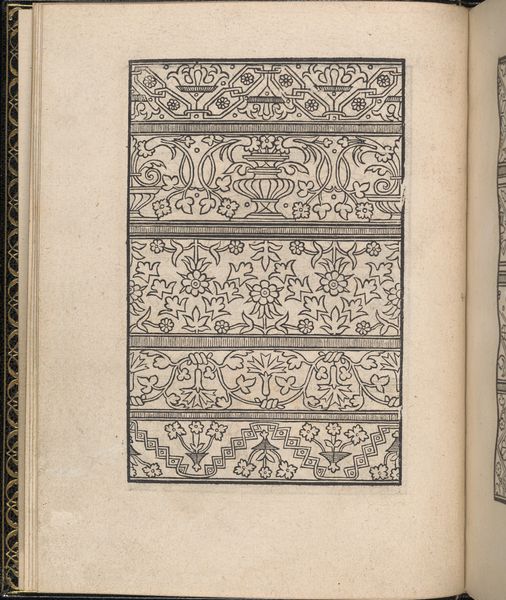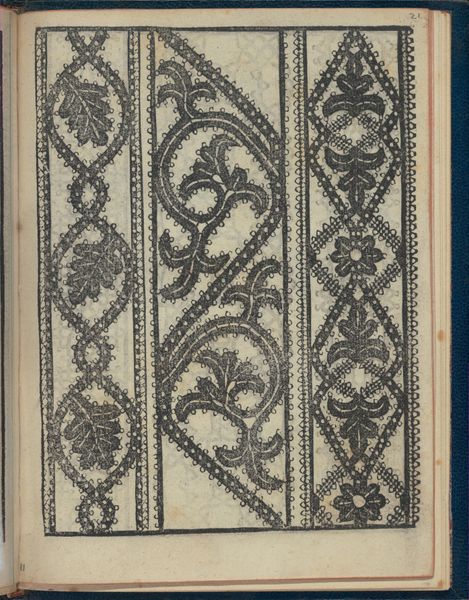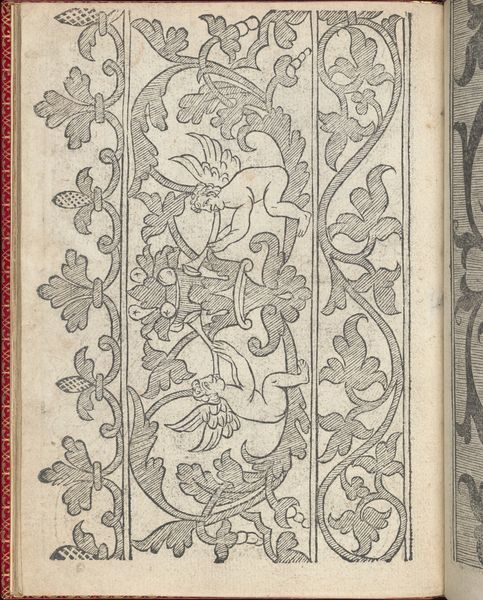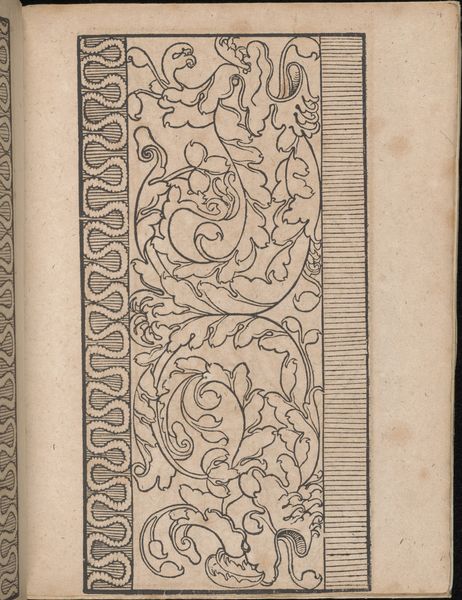
drawing, ornament, print, engraving
#
drawing
#
ornament
# print
#
book
#
geometric
#
italian-renaissance
#
engraving
Dimensions: Overall: 7 7/8 x 5 11/16 in. (20 x 14.5 cm)
Copyright: Public Domain
Editor: This is a page from "Il Monte. Opera Nova di Recami," created sometime between 1557 and 1570 by Giovanni Antonio Bindoni. It's an engraving showing various geometric and floral patterns, seemingly for ornamental use. It has a symmetrical, almost rigid quality to it, and I am intrigued to discover more about it. How do you interpret this work? Curator: It’s fascinating how these ornamental prints, these almost humble objects, reveal so much about Renaissance culture. Beyond the obvious aesthetic pleasure, we need to ask: who was this book for? The geometric precision and repeating motifs were likely aimed at artisans, particularly women involved in needlework. Consider how pattern books empowered them, offering designs, and perhaps economic agency, within a patriarchal society. Editor: So, the book functioned almost as a tool for female empowerment, by enabling their creative expression? Curator: Precisely. These patterns were not just decorations. They were integral to the creation of textiles, clothing, and other domestic objects, all fields historically dominated by women’s labor. In what ways do you see this as contributing to the broader social context of the Renaissance? Editor: It's interesting to think that what might seem like simple designs could be quietly subverting gendered expectations. By providing women with the tools for creation and economic opportunity, these pattern books challenged the traditional roles assigned to them. Curator: Exactly. This intricate dance between artistic expression and social context allows us to question how these images reinforce or resist these power structures. Now, how can we tie that back into contemporary concerns? Editor: That's a perspective I hadn't considered. Seeing the connections between art and activism, even in historical pieces like this, really opens my eyes to the possibilities of art history. Curator: It’s this dialogue between past and present that keeps art history vibrant and relevant. Thank you for sharing your insights.
Comments
No comments
Be the first to comment and join the conversation on the ultimate creative platform.
